 |
California Harassment Prevention Training for Team Members (Spanish) (Corrections) |
1.00 |
Harassment cases have resulted in organizations being liable for hundreds of millions of dollars in legal fees and lost revenue annually. The information presented here enables employees in the organization to create a harassment-free culture.
Los casos de acoso han hecho que las organizaciones sean responsables de cientos de millones de dólares en honorarios legales y pérdida de ingresos anualmente. La información presentada aquí permite a los empleados de la organización crear una cultura libre de acoso. |
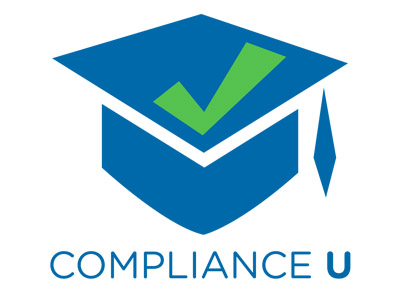 |
California Harassment Prevention Training for Team Members (Corrections) |
1.00 |
Harassment cases have resulted in organizations being liable for hundreds of millions of dollars in legal fees and lost revenue annually. The information presented here enables employees in the organization to create a harassment-free culture. |
 |
California Harassment Prevention Training for Team Members |
1.00 |
Harassment cases have resulted in organizations being liable for hundreds of millions of dollars in legal fees and lost revenue annually. The information presented here enables employees in the organization to create a harassment-free culture. |
 |
Adaptive Radiation and Evolution: A Case Study using Hawaiian Forest Birds |
1.00 |
Hawaiian forest birds, specifically Hawaiian Honeycreepers, are an excellent example of evolution by adaptive radiation due to their close relationships, but diversity in morphology and behavior. The factors involved in the biological concept of evolution will be discussed, with adaptive radiation as a particular mechanism, and how this is evident in certain features of Hawaiian Honeycreepers. |
 |
Carreras sin universidad (Spanish) Careers Without College |
0.75 |
Hay muchas maneras diferentes de tener éxito en la vida. Lo que podría ser la carrera profesional adecuada para algunos puede no ser la opción adecuada para usted. Encontrar tu nicho es importante. Al seleccionar la carrera profesional adecuada, es importante sopesar todas las opciones. En este curso, exploraremos una amplia gama de carreras disponibles para cualquier persona con diversas habilidades y educación secundaria.
There are many different ways to be successful in life. What might be the right career path for some may not be the right choice for you. Finding your niche is important. When selecting the right career path, it’s important to weigh all of your options. In this course, we will explore a wide range of careers available to anyone with various skills and a high school education.
|
 |
Construction Safety & Prevention Program: Hazard Identification Plan |
0.50 |
Hazard Identification Plan is part of a twelve-part construction safety and prevention program. This course covers how businesses can utilize a hazard identification plan, the costs of identifying and abating hazards, and how both employees and managerial staff can create a culture of safety. |
 |
A Student Guide to Hazing |
0.50 |
Hazing happens in sports, in Greek life, in honor societies, and in marching bands. Over half of all college students involved in sports, clubs, and other organizations experience hazing. Both male and females students report a high level of hazing, and two out of five students say they know hazing happens on their campus. This course is designed to help students quickly recognize and effectively respond to hazing. |
 |
Foreign Corrupt Practices Act Training |
1.00 |
Higher education institutions are more global today than ever before. Colleges and universities work with students, instructors, and researchers from countries around the world. Colleges and universities also work with nongovernmental organizations, engage in joint ventures, participate in international foundations, and collaborate on research projects in other countries. The Foreign Corrupt Practices Act, or FCPA, exists to prevent corrupt practices in international business transactions. While it’s It’s tempting to think that the FCPA doesn’t apply to the world of higher education, it does. |
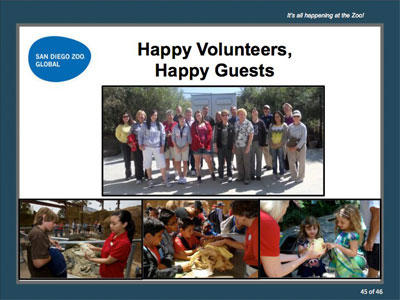 |
Blended Learning |
1.00 |
How do you effectively take a tired old lecture series or outdated formalized training and turn it into a vibrant and engaging program perfect for your learner audiences? For most organizations, blended learning is a MUST. Follow our journey from investigation to implementation of training for a variety of volunteer assignments. Explore a multitude of techniques to teach a broad range of learners effectively and efficiently. Join us as we share tips and techniques on implementing blended learning. |
 |
Family-Teacher Relationships (CDA 4) |
2.00 |
How do you view the families of the children in your classroom? If you were to generate a list of words to describe families, what kinds of positive and negative feelings would they convey?
When we see ourselves as partners with the families we serve, the quality of care and nurturing children receive is greatly enhanced. Establishing such partnerships and building relationships is our responsibility. Communication strategies, such as practicing active listening, are key to this process. In this course, participants will describe the importance and benefits of establishing meaningful relationships with families and identify strategies for establishing meaningful relationships.
This course is designed to be part of a Child Development Associate (CDA) Credential™ curriculum. It covers CDA Subject Area 4: Strategies to Establish Productive Relationships with Families. This course can also be taken as a stand-alone learning event, or as part of a broader early childhood education curriculum. |
 |
Child Abuse Prevention and Awareness for Supervisors and Managers (Corrections) |
1.50 |
If a staff member or volunteer in a child-related program approaches his or her supervisor with a case of suspected child abuse the supervisor must know how to handle the situation to ensure the safety of everyone in the program. This course provides supervisors with a wealth of information about how to recognize and prevent child abuse within program walls, and furthermore, the steps to take when a situation of child abuse arises. In addition, you will learn best practices for yourself, your staff and your organization. |
 |
How to Navigate Stress Like a Hero |
1.00 |
If only stress weren’t so stressful. There is good news, though: stress doesn’t have to be the enemy! In fact, we can enhance our emotional intelligence by identifying the sources of our stress and creating a plan for adaptive stress management. Stress fuel—adrenaline and cortisol—can empower us to be Life-Givers or Life-Suckers, and fortunately, we get to make the choice. |
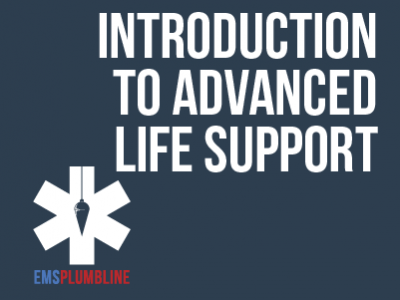 |
Constructing: Sepsis for Paramedics, Part 2—Fluid Resuscitation |
1.00 |
If you think caring for sepsis patients is not an interesting topic, you might want to think again. Medical Directors Jeremy Cushman and Christopher Galton, give Paramedic Hoskins a passionate description of proper patient care. Fluids are important and this is why. Final Exam: This multiple choice exam is designed to test your knowledge of the material you just reviewed. You have two attempts to gain an 80% or higher on this exam. Please take your time and answer each question carefully. |
 |
Interpretation Basics: Module III Storytelling |
2.50 |
If you've successfully completed Interpretation Basics: Modules I and II, you can further develop your interpretive skills by completing the third module in the series: Interpretation Basics III: Storytelling. A well-told story is the most powerful way to connect visitors to your organization's mission and inspire conservation action. The skills presented in this course will help you select, develop, and deliver message-driven stories that are compelling, enjoyable, meaningful, and memorable. |
 |
Motivation: Identifying, Planning, and Implementing: Basics Of Motivation |
1.00 |
If you’re going to take a trip by driving from New York to Los Angeles, you’ll need several tanks of gas. Similarly, if you plan to take a trip that will move you closer to a personal or professional goal, you can expect that you will need several refills of your motivation tank to give you the energy to get there. People say that a journey of a thousand miles begins with a single step, but it’s extremely difficult to continue taking steps when your personal-motivation fuel tank is empty.
In this course you will learn to: describe the basics of motivation, define motivation as a process, and describe some theories about how motivation can affect your productivity. |
 |
Motivation: Identifying, Planning, and Implementing: Basics Of Motivation (Instructor Guide) |
1.00 |
If you’re going to take a trip by driving from New York to Los Angeles, you’ll need several tanks of gas. Similarly, if you plan to take a trip that will move you closer to a personal or professional goal, you can expect that you will need several refills of your motivation tank to give you the energy to get there. People say that a journey of a thousand miles begins with a single step, but it’s extremely difficult to continue taking steps when your personal-motivation fuel tank is empty.
In this course you will learn to: describe the basics of motivation, define motivation as a process, and describe some theories about how motivation can affect your productivity.
This Instructor's Edition of this course includes notes and suggestions to assist you in presenting the material, whether in an in-person classroom setting, or as an instructor-led online or distance-learning course. It also provides you with the answers to questions found in mid-lesson activities, as well as in the quiz that concludes the course. |
 |
A Student Guide to Implicit Bias |
1.00 |
Implicit biases are the unconscious attitudes, reactions, and stereotypes that affect our understanding, actions, and decisions. In this course, students will explore the implicit biases that happen despite their best intentions. They will learn how implicit bias can impact the classroom and the workplace, and identify steps they can take to learn more about their own implicit biases. |
 |
Emergency First Aid |
1.00 |
Improving the safety of your workers by training them in First Aid, CPR, and AED is important. In this course, participants will learn some first aid basics, how to provide First Aid for a few medical, injury, and environmental injuries, and how to provide CPR and use an AED. Participants will also learn about training options that are available to them through the American Heart Association.
Note: Completion of this course does not result in first aid, CPR, or AED use certification. For information on how to become certified, visit the American Heart Association CPR & First Aid website by visiting https://cpr.heart.org/. |
 |
Disaster Preparedness |
2.00 |
In 2007, the San Diego Zoo Safari Park was faced with the oncoming storm of a massive wildfire. Lessons learned from this and other emergency situations have been used to create a learning module designed to help you be prepared for similar crises. This course help you identify the components of a disaster and understand what actions should be taken. A significant part of the instruction covers methods for averting disaster and ways to communicate during an event. |
 |
HEPA Standards 2.0 and the Self-Assessment Tool |
1.00 |
In 2011 the National AfterSchool Association adopted standards for healthy eating and physical activity (HEPA) in out-of-school time. In 2018, the HEPA Standards were updated to Version 2.0.
This interactive e-learning course, commissioned by the Kentucky Out-of-School Alliance (KYOSA) and designed by CypherWorx, will explain how the HEPA Standards were created and how they should be used, as well as presenting the Standards in their entirety. We will also cover the HEPA Standards 2.0 Self-Assessment Tool and how to use it. |
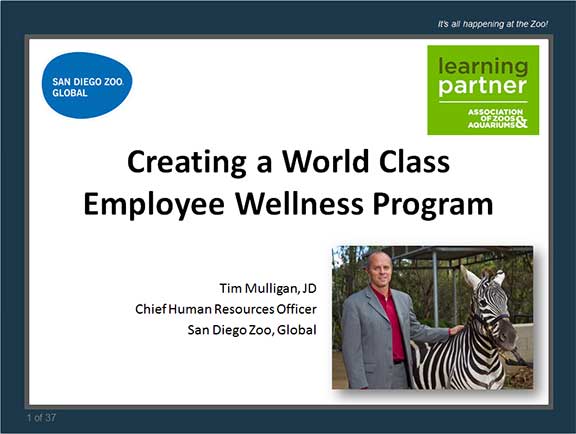 |
World Class Wellness |
1.00 |
In 2011, San Diego Zoo Global rolled out the "Roar Longer" program, a comprehensive workplace wellness program. For two years, this program has successfully taken engagement, productivity, and health minded thinking to another level. In this webinar, Tim Mulligan, Chief Human Resources Officer for San Diego Zoo Global, will teach participants the tricks of the trade in building a results-oriented wellness program. |
 |
ADHD (CDA 8) |
2.00 |
In a 2015 survey, one half of children in preschool were on medication for Attention Deficit Hyperactivity Disorder (ADHD). People with ADHD tend to be visionaries, dreamers, explorers, inventors, and trend setters. In this course, we will explore ADHD as a disorder that can negatively affect a child’s life, and as a trait that may be beneficial in helping a child grow into a successful adult. This course is designed to be part of a Child Development Associate (CDA) Credential™ curriculum and covers CDA Subject Area 8, Understanding Principles of Child Development and Learning. This course can also be taken as a stand-alone learning event or as part of a broader early childhood education curriculum. |
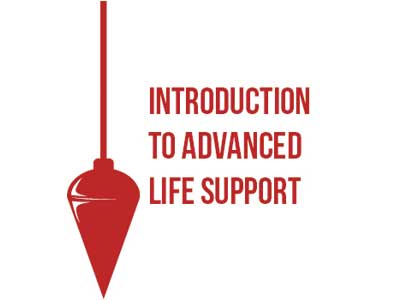 |
ALS Airway Response - Part Two |
1.00 |
In a twenty minute discussion, Dr. Galton shared some very valuable opinions that were formulated, in a large part, from his many years as a paramedic. Join us for an extension of this discussion. In this second part, Dr. Galton briefly discusses exhalation of CO2, Instrumenting an Airway, Management of Gastric Tubes, and more. You have two attempts to gain a 70% or higher on this exam. Take your time and good luck! |
 |
Behavior Management for Paraprofessionals |
1.50 |
In an education setting, behavior management involves teaching and reinforcing positive behaviors while trying to reduce negative ones. This course covers how a paraprofessional can assist with behavior management in the classroom.
This is just one out of many paraprofessional courses we offer. This course will help you expand your knowledge about student behavior and will help you understand what your role as a paraprofessional is. |
 |
Behavior Management for Teachers |
1.50 |
In an educational setting, behavior management involves teaching and reinforcing positive behaviors while reducing negative ones. This course covers how to incorporate behavior management in the classroom.
This is just one of many educational courses we offer. This course will help you expand your knowledge about student behavior and will help you implement behavior management techniques. |


























